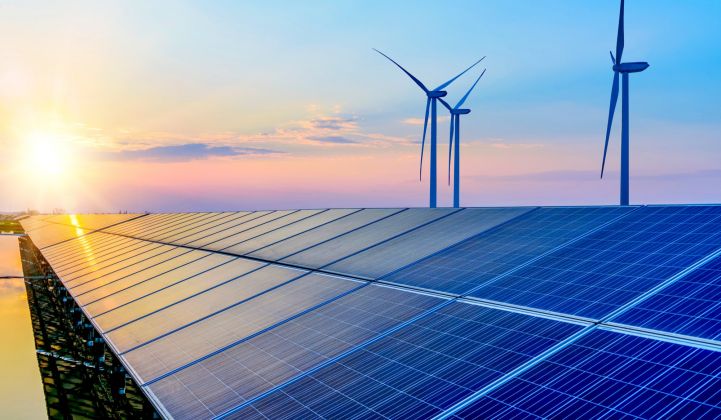Long-duration storage startup Form Energy thought that solving the problem of months-long grid storage would take a decade. But its last year of work advanced faster than expected.
Based on that progress, the team of industry veterans has fast-tracked development and raised a $40 million Series B, co-founder Mateo Jaramillo told Greentech Media. Italian oil and gas major Eni signed on as lead investor, joined by Capricorn Investment Group and most of the existing investors from last year's $9 million Series A.
Those original investors include some big names, too: Breakthrough Energy Ventures, Prelude Ventures, Macquarie Capital, Saudi Aramco (which didn't join the Series B), and Massachusetts Institute of Technology offshoot The Engine.
Jaramillo, who previously built Tesla's energy storage program, teamed up with MIT professor and prolific battery inventor Yet-Ming Chiang and Aquion alum Ted Wiley to found the company last year, with the goal of creating a product to make renewable energy fully dispatchable. MIT-educated battery scientist Billy Woodford and Marco Ferrara, former energy analytics VP for IHI Inc., round out the team of founders.
Market for baseload renewables coming soon
Today's lithium-ion batteries can shift solar power into the evening for a few hours, but they become prohibitively expensive as a tool for weeks or months of guaranteed power delivery. Form Energy tackled that problem in the lab with an aqueous sulfur flow battery chemistry and an undisclosed electrochemical solution.
Meanwhile, the team modeled the economics of a lower-carbon grid to discern where this new type of power plant could go to market, and then performed similar analyses for paying customers.
"It’s gone better than I could have guessed and as well as we could have hoped," Jaramillo said. "We have gone and had all those conversations with the major industry stakeholders that confirmed this is of interest right now."
Instead of the initial plan to study the markets and technology for five years and go to market in 10, the analysis showed that an addressable market for "baseload renewables" would arise in the next three to five years, said Jaramillo.
In the lab, the company decided to prioritize the electrochemical design as the go-to-market product. Jaramillo declined to specify the chemistry, but confirmed it is not lithium-based, nor is it based on zinc, which companies like NantEnergy and Eos chose in their search for low-cost lithium-ion alternatives.
"We were able to have a fully functioning cell that was hitting the technical marks," Jaramillo said. "It's much more than just modeling; we have a ton of experimental data at the fully integrated cell level."
Scaling up
The company will continue to develop the aqueous sulfur battery through a Department of Energy grant, but the electrochemical solution will be the company's primary focus.
With those steps, Form's leaders believe they have retired the scientific and market risk around their design. The next step, with $40 million to spend, is to scale up the current cell by 10 to 100 times and turn it into a fully engineered product.
Assuming that comes to fruition — never a surefire assumption in the battery tech world — Jaramillo thinks the technology, paired with renewable generation, will be able to compete economically without restructuring existing power markets.
"We don’t need brand-new market designs here," he said. "You need to be compensated the same way natural-gas plants are being compensated."
The goal is to outcompete not just rarely used and expensive gas peaker plants, but the mid-merit combined cycle gas plants that deliver much more energy to the grid. A dispatchable renewable plant will have a benefit over gas in that it carries no fuel risk. But inventing a radically cheaper storage device is crucial for making that competition viable.
Long-duration storage startups have struggled for years, but the market has heated up in recent weeks. That's in large part due to the growth of renewables pushing a need for more grid storage in the near term.
Earlier this month, SoftBank Vision Fund invested an unprecedented $110 million in Energy Vault, which is building a mechanical storage system using cranes and heavy blocks, with the goal of making renewables dispatchable. And earlier this summer, Copenhagen Infrastructure Partners signed on as a financial backer of a new closed-loop pumped hydro storage plant in Montana.




